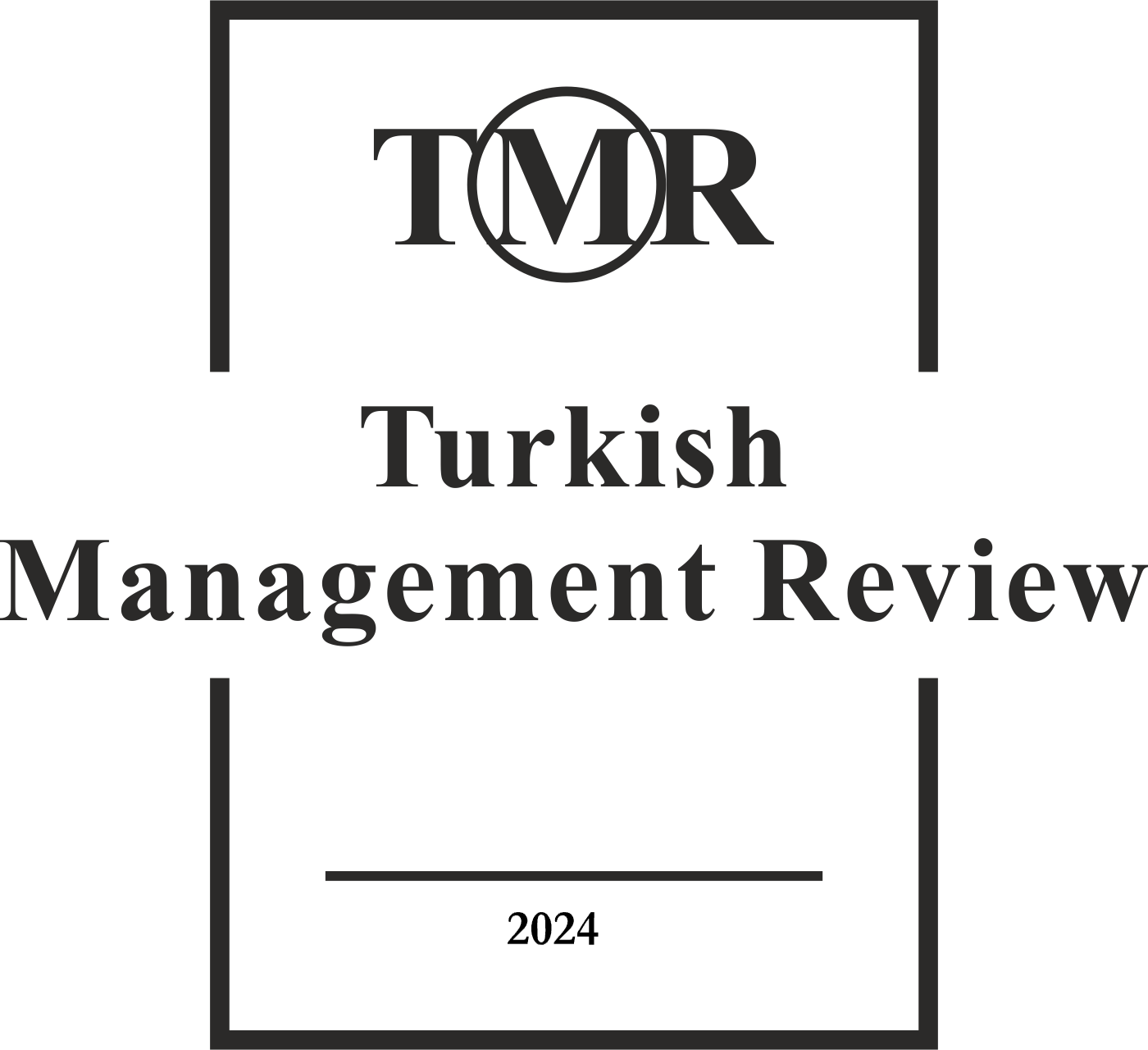ALTERNATIVE APPROACH IN PERSONNEL PERFORMANCE EVALUATION: ARAS METHOD
DOI:
https://doi.org/10.5281/zenodo.12607409Keywords:
Personnel performance evaluation, Performance management, ARAS methodAbstract
Personnel performance evaluation is one of the critical tasks of human resources management. This process, which requires the evaluation of many factors together, brings with it various difficulties. The relative approach and absolute performance approaches used have their own limitations. ARAS method, which is one of the multi-criteria decision-making techniques, has the potential to evaluate many factors reflecting personnel performance together, overcoming the limitations of both approaches. The ARAS method offers a hybrid model structure that ensures objectivity and fairness in personnel performance evaluation by including both absolute performance criteria and relative evaluation. In this study, the use of the ARAS method in personnel performance evaluation and its advantages are revealed. For this purpose, an application is presented based on the 2023 publication performance evaluation of academic staff working in the same department at a state university. The results of the ARAS method were compared with the results of the TOPSIS method, which is frequently used in the literature. The comparison demonstrates the managerial advantages of the ARAS method, pointing to a critical distinction in its ability to identify performance differences and closeness to ideal performance.)
References
Arslan, B. N. ve Ayvaz, B. (2021). AHP ve CODAS Yöntemi ile Emniyet Personeli Performans Ölçümü. İstanbul Sabahattin Zaim Üniversitesi Fen Bilimleri Enstitüsü Dergisi, 3(2), 149–158. doi:10.47769/izufbed.928068
Bandyopadhyay, S. (2023). A novel multi-criteria decision analysis technique incorporating demanding essential characteristics of existing MCDA techniques. Progress in Artificial Intelligence, 12(3), 231–255. doi:10.1007/s13748-023-00299-5
Cinelli, M., Kadziński, M., Gonzalez, M. ve Słowiński, R. (2020). How to support the application of multiple criteria decision analysis? Let us start with a comprehensive taxonomy. Omega, 96, 102261. doi:10.1016/J.OMEGA.2020.102261
Erdemir, N., Öztürk, F. ve Kaya, G. K. (2022). Kamu personeli performans değerlendirmesi için AHP ve bulanık TOPSIS ile bütünleşik karar destek modeli. Gazi Üniversitesi Mühendislik Mimarlık Fakültesi Dergisi, 37(4), 1809–1822. doi:10.17341/gazimmfd.933793
Freddy, C. M. ve Renuga, D. S. (2022). Soverignity of human resource management on organization effectiveness and development. International Journal Of Engineering Technology And Management Sciences, 6(6), 99–103. doi:10.46647/ijetms.2022.v06i05.013
Ishizaka, A. ve Pereira, V. E. (2016). Portraying an employee performance management system based on multi-criteria decision analysis and visual techniques. International Journal of Manpower, 37(4), 628–659. doi:10.1108/IJM-07-2014-0149
Karaca, M. ve Demirtaş, Ö. (2022). Sağlık personelinin performans değerlendirmesine yönelik bir model önerisi. ODÜ Sosyal Bilimler Araştırmaları Dergisi (ODÜSOBİAD). doi:10.48146/odusobiad.1162415
Macchi Silva, V. V. ve Ribeiro, J. L. D. (2021). A discussion on using quantitative or qualitative data for assessment of individual competencies. Personnel Review, 50(6), 1460–1478. doi:10.1108/PR-08-2019-0444
Shamshol Bahri, M. S., Shariff, S. S. R. ve Yahya, N. (2023). Comparative Analysis on Decision Criteria for Port Personnel Using Hybrid Analytical Hierarchy Process (H-AHP). International Journal of the Analytic Hierarchy Process, 14(3). doi:10.13033/ijahp.v14i3.974
Taşdemir, S. ve Yıldız, A. (2023). Aralık Tip-2 Bulanık TOPSIS Yöntemi Kullanılarak Çalışan Performansının Değerlendirilmesi. Computer Science. doi:10.53070/bbd.1345805
Viswesvaran, C. ve Ones, D. S. (2017). Job Performance: Assessment Issues in Personnel Selection. The Blackwell Handbook of Personnel Selection içinde (ss. 354–375). Wiley. doi:10.1002/9781405164221.ch16
Wilkinson, A. (2022). Human Resource Management: A Very Short Introduction. Oxford University PressOxford. doi:10.1093/actrade/9780198714736.001.0001
Zavadskas, E. K. ve Turskis, Z. (2010). A new additive ratio assessment (ARAS) method in multicriteria decision-making. Technological and Economic Development of Economy, 16(2), 159–172. doi:10.3846/TEDE.2010.10
Zeydan, M. ve Kayhan, G. (2020). Personel Performans Değerlendirmesi ve Seçiminde Hibrid Bir Yaklaşım. Çukurova Üniversitesi Sosyal Bilimler Enstitüsü Dergisi, 29(3), 91–118. doi:10.35379/cusosbil.652012
Downloads
Published
How to Cite
Issue
Section
License
Copyright (c) 2024 Turkish Management Review

This work is licensed under a Creative Commons Attribution 4.0 International License.
You are free to:
- Share — copy and redistribute the material in any medium or format for any purpose, even commercially.
- Adapt — remix, transform, and build upon the material for any purpose, even commercially.
- The licensor cannot revoke these freedoms as long as you follow the license terms.
Under the following terms:
- Attribution — You must give appropriate credit , provide a link to the license, and indicate if changes were made . You may do so in any reasonable manner, but not in any way that suggests the licensor endorses you or your use.
- No additional restrictions — You may not apply legal terms or technological measures that legally restrict others from doing anything the license permits.
Notices:
You do not have to comply with the license for elements of the material in the public domain or where your use is permitted by an applicable exception or limitation .
No warranties are given. The license may not give you all of the permissions necessary for your intended use. For example, other rights such as publicity, privacy, or moral rights may limit how you use the material.




